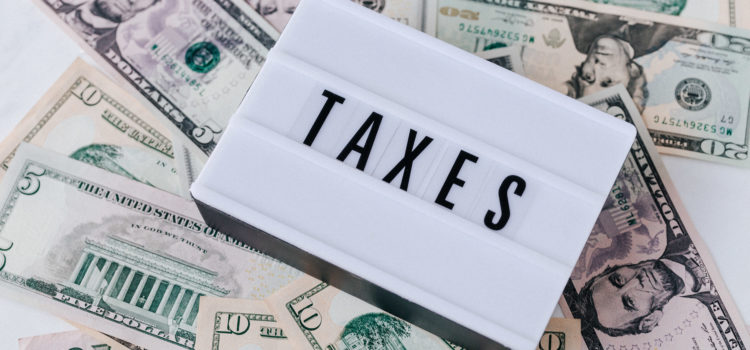

This article is an excerpt from the Shortform book guide to "Economics in One Lesson" by Henry Hazlitt. Shortform has the world's best summaries and analyses of books you should be reading.
Like this article? Sign up for a free trial here .
What is the role of taxation in an economy? Under what circumstances does raising taxes hinder the economy on the national level?
Some tax-funded projects are essential to keep the country running. But when the government uses taxes to fund projects and pay wages that are unnecessary, the consequences begin to outweigh the benefits.
In this article, we’ll consider the effect of taxation in the context of public works funding.
Public Works Projects Hurt National Production
Raising taxation to fund public projects is considered good for the economy. However, the effect of taxation is not as benevolent as you may think.
Public works projects divert resources and manpower that would have otherwise supported jobs in private industries.
People tend to be shortsighted and overly optimistic about public works projects. Many people see the benefits of public works projects—including job creation and construction of useful structures, like roads and bridges—but they fail to see the invisible costs. Government spending is paid through taxes, meaning that public works projects come at the cost of the goods and services that individuals would have spent with the money they paid in taxes.
People generally make two arguments in defense of public works projects, such as building a $100 million bridge:
- The projects create employment. Although it’s true that one group of people gets jobs working on the bridge, the full picture reveals that the $100 million cost to taxpayers prevents individual spending that could have created private jobs. The public jobs created are offset by the private jobs that were destroyed or that never had the opportunity to exist.
- The projects create structures that benefit the community. While it may be beneficial to have a particular bridge or dam, there’s no way of knowing the countless goods and structures that could have been created if the taxpayers had been able to keep their collective $100 million. Naturally, many public works projects are necessary to maintain essential public roads and services. However, when projects are undertaken for the primary purpose of creating jobs and stimulating the economy, the costs must be weighed against the benefits.
People overestimate the positive effects of public works projects because they’re visible: You can see the people working on a bridge, you can see the construction progress week after week, and you can drive over the finished bridge. On the other hand, people overlook the costs of public works projects because they’re invisible—you can’t see the jobs and possibilities that were lost because of the taxes, manpower, and other resources that were diverted to the public works project. Additionally, when the primary goal of a project is job creation, the work will inevitably be inefficient, because projects that are unending and inefficient are more successful at creating and maintaining jobs than projects that are finished quickly with a lean crew.
Taxes Hamper Private Industry
Fallacy: Tax-funded projects create jobs and build wealth.
Reality: Tax-funded projects inhibit private job creation and productivity by taking money out of taxpayers’ hands.
As we discussed regarding public works projects, taxes on individual and corporate earnings take money out of people’s pockets, which inhibits the creation of private jobs and wealth. Of course, some taxes are necessary for basic government services. However, the danger arises when taxes are viewed as a consequence-free source of funding for job-creation and wealth-building efforts.
Taxes create an imbalance between dollars spent and dollars earned. When corporations or individuals earn a dollar, they may only keep 50 cents, with the rest going to taxes. On the other hand, when they spend a dollar, they lose the entire 100 cents. They have to earn significantly more than they lose in order to offset the taxes.
For manufacturing, high taxes prevent companies from expanding, and, if they do expand, they do so with minimal risk. Manufacturers’ reluctance to expand and take on risk slows the adoption of updated, more efficient machinery, which means that the products they sell aren’t as high-quality or affordable as they otherwise could be. Additionally, the high price of doing business deters entrepreneurs from starting new companies. As a result, compared to the potential if companies shouldered lower taxes, taxes inhibit growth among new and old businesses, which leads to:
- Less job creation
- Delayed upgrades to production facilities
- Lower-quality and higher-priced goods than would be available if there were more market competition
- Limited wage raises
For individuals, the effects are similar, but on a smaller scale. So much of an employee’s earnings are taxed that it’s difficult for people to accumulate significant amounts of money for investments. Furthermore, when people consider how much of their earnings are taken through taxes, they want to hold on more tightly to the money they have, and they become more reluctant to take risks with it. As a result, people are less inclined to use their money to support private industry growth through spending and investing.
Government Payroll Reduces Purchasing Power
Fallacy: Government-paid jobs have no negative impact on private industry.
Reality: When government-paid jobs are no longer needed, continuing to fund them with taxes hurts national productivity and wealth.
Although taxes reduce taxpayers’ purchasing power, they fund many essential projects, services, and paychecks. Members of the military and civilian government workers—including police, firefighters, and appointed officials—don’t contribute directly to national wealth, but their work is critical to the country’s well-being. However, when their services are no longer essential, they become a drain on national productivity and collective wealth.
During wartime, the government uses taxpayer dollars to pay soldiers for their military service, which is essentially an investment in the country’s freedom and democracy. At the end of a war, people often worry that a mass of soldiers seeking jobs at the same time will lead to high unemployment. However, when the troops are no longer needed, civilians enjoy lower taxes, which means there’s more money in their pockets to spend on goods and services. This spending supports enough job creation that the private industry can eventually absorb the former troops. Additionally, when the former soldiers enter the private workforce, they contribute to the production of goods and services, which adds to the national wealth.
The same is true of other government workers. Although there’s no clear expiration date for an inspector’s or accountant’s job—as the end of a war marks the end of a soldier’s service—policymakers should regularly evaluate whether there are more workers on government payroll than necessary. If a government employee’s service isn’t essential, then it’s solely harming the country’s collective wealth.

———End of Preview———
Like what you just read? Read the rest of the world's best book summary and analysis of Henry Hazlitt's "Economics in One Lesson" at Shortform .
Here's what you'll find in our full Economics in One Lesson summary :
- A clear, concise explanation of the secondary consequences of a range of economic policies
- How labor-saving technology actually creates more jobs
- How saving money supports the economy more than spending it






